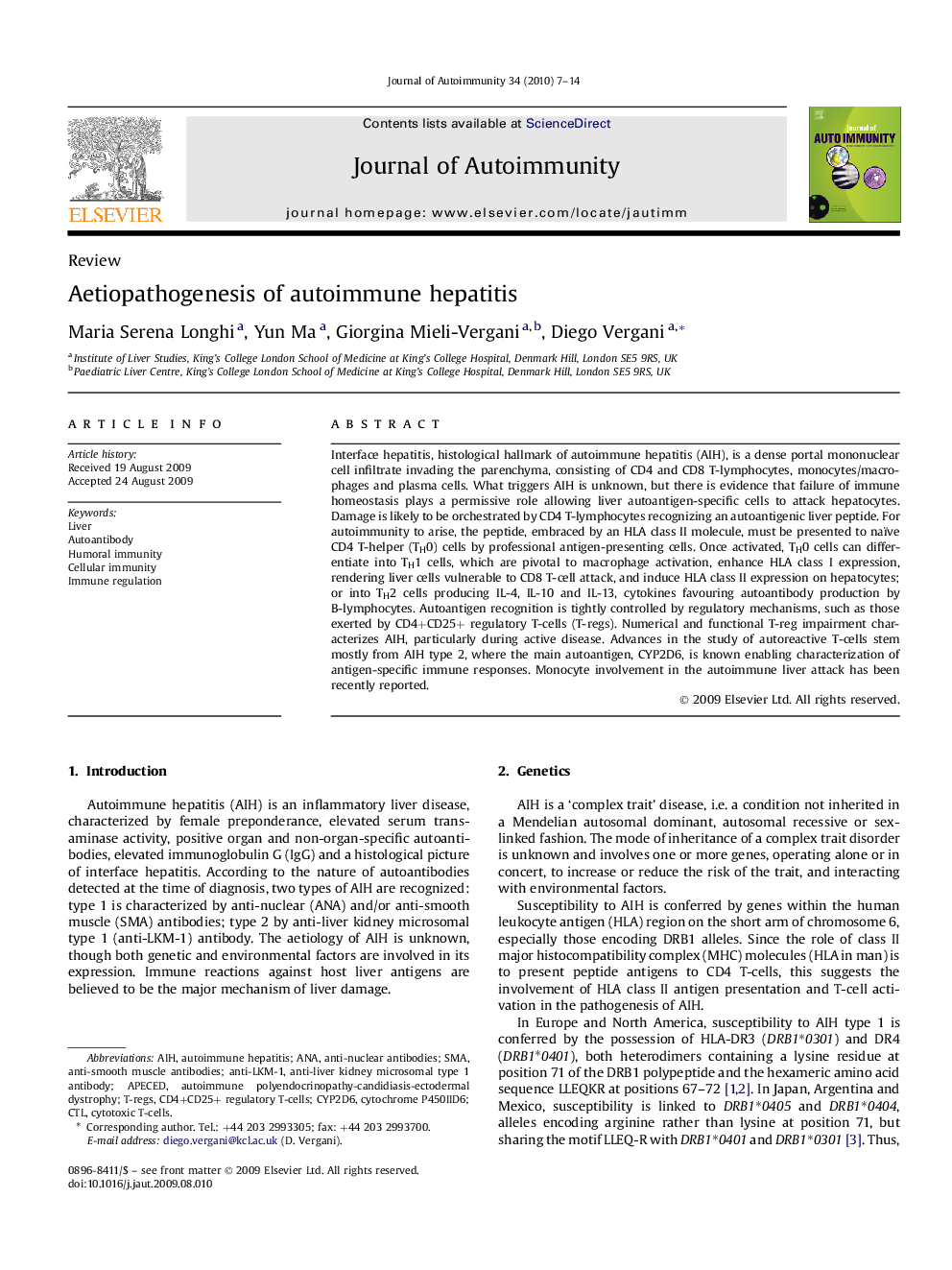| کد مقاله | کد نشریه | سال انتشار | مقاله انگلیسی | نسخه تمام متن |
|---|---|---|---|---|
| 3368030 | 1218765 | 2010 | 8 صفحه PDF | دانلود رایگان |

Interface hepatitis, histological hallmark of autoimmune hepatitis (AIH), is a dense portal mononuclear cell infiltrate invading the parenchyma, consisting of CD4 and CD8 T-lymphocytes, monocytes/macrophages and plasma cells. What triggers AIH is unknown, but there is evidence that failure of immune homeostasis plays a permissive role allowing liver autoantigen-specific cells to attack hepatocytes. Damage is likely to be orchestrated by CD4 T-lymphocytes recognizing an autoantigenic liver peptide. For autoimmunity to arise, the peptide, embraced by an HLA class II molecule, must be presented to naïve CD4 T-helper (TH0) cells by professional antigen-presenting cells. Once activated, TH0 cells can differentiate into TH1 cells, which are pivotal to macrophage activation, enhance HLA class I expression, rendering liver cells vulnerable to CD8 T-cell attack, and induce HLA class II expression on hepatocytes; or into TH2 cells producing IL-4, IL-10 and IL-13, cytokines favouring autoantibody production by B-lymphocytes. Autoantigen recognition is tightly controlled by regulatory mechanisms, such as those exerted by CD4+CD25+ regulatory T-cells (T-regs). Numerical and functional T-reg impairment characterizes AIH, particularly during active disease. Advances in the study of autoreactive T-cells stem mostly from AIH type 2, where the main autoantigen, CYP2D6, is known enabling characterization of antigen-specific immune responses. Monocyte involvement in the autoimmune liver attack has been recently reported.
Journal: Journal of Autoimmunity - Volume 34, Issue 1, February 2010, Pages 7–14